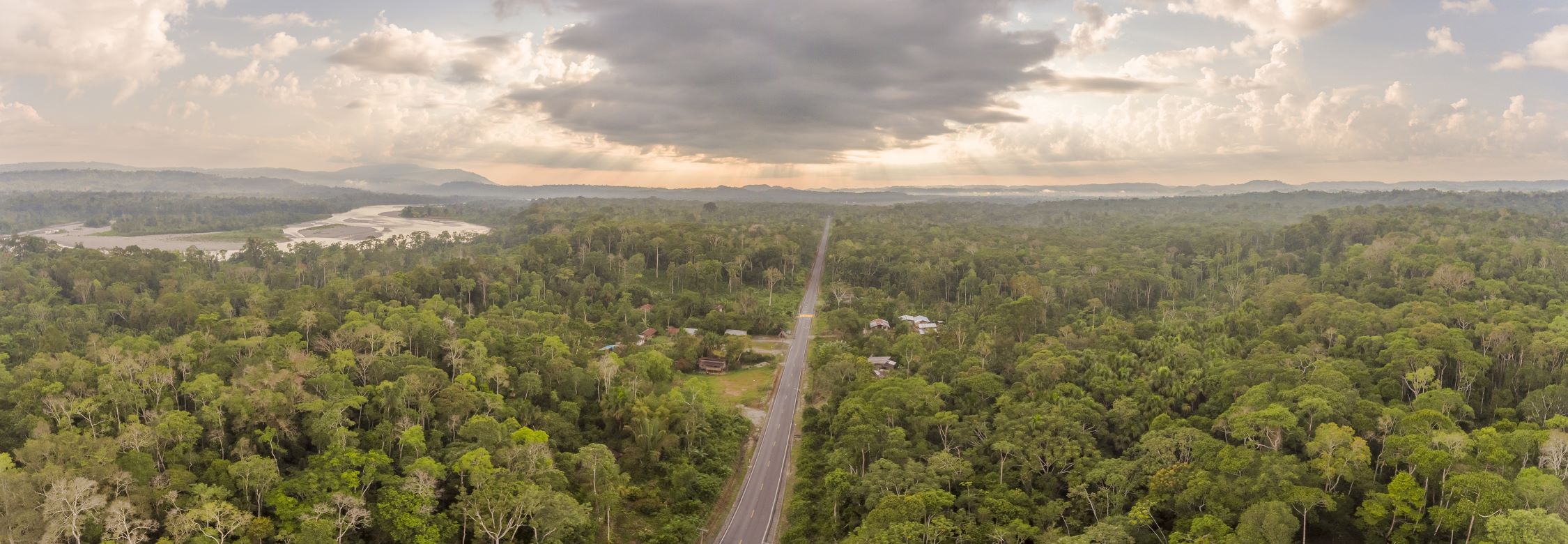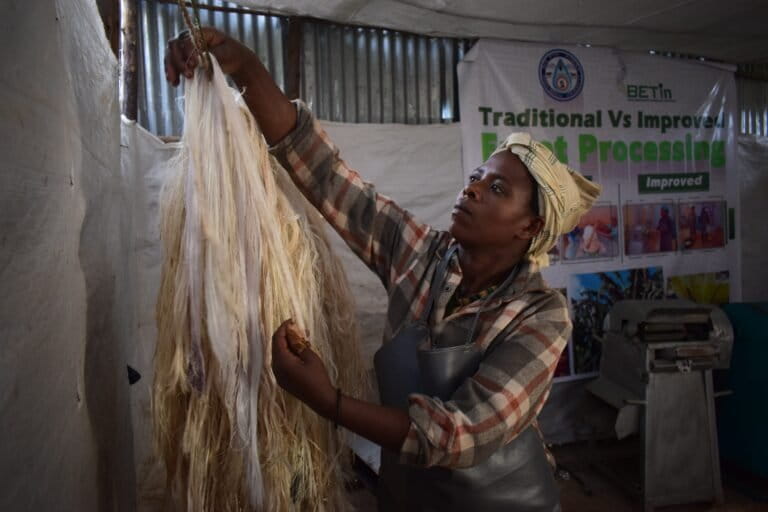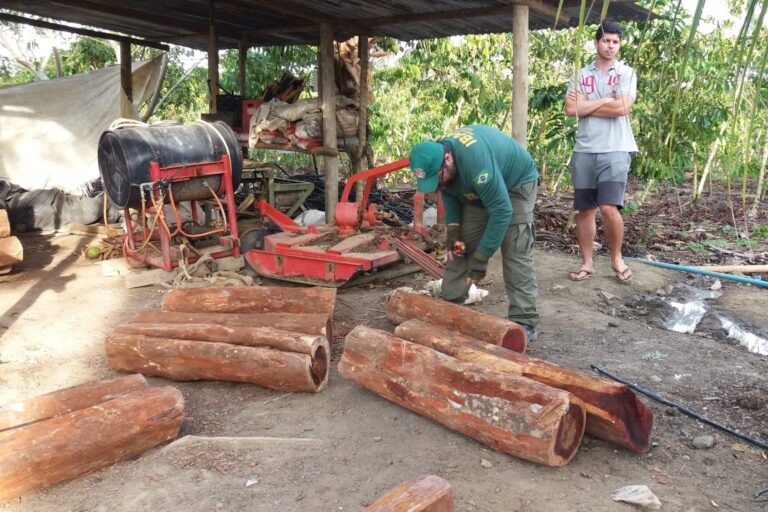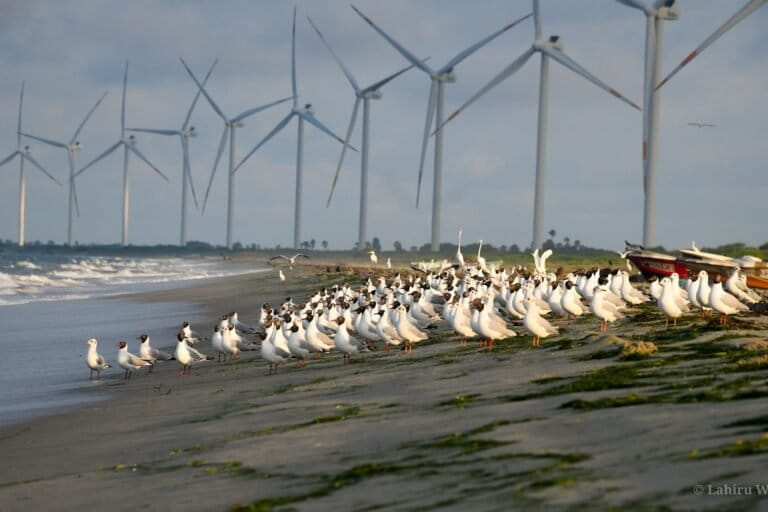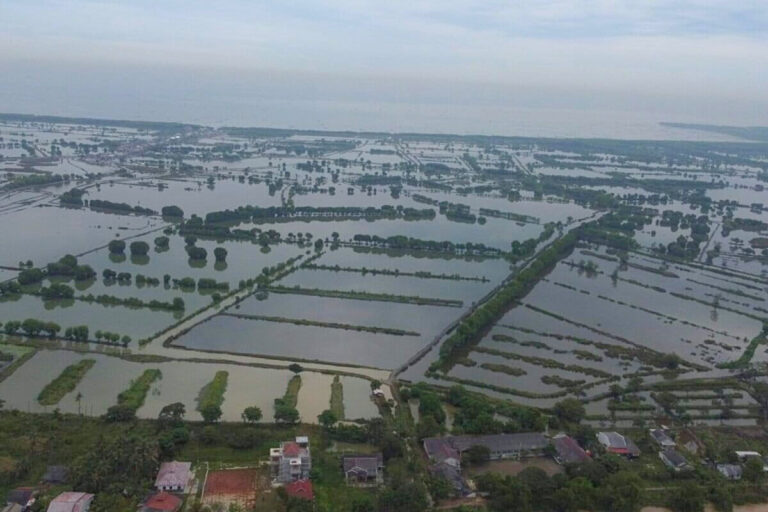- Mongabay has begun publishing a new edition of the book, “A Perfect Storm in the Amazon,” in short installments and in three languages: Spanish, English and Portuguese.
- Author Timothy J. Killeen is an academic and expert who, since the 1980s, has studied the rainforests of Brazil and Bolivia, where he lived for more than 35 years.
- Chronicling the efforts of nine Amazonian countries to curb deforestation, this edition provides an overview of the topics most relevant to the conservation of the region’s biodiversity, ecosystem services and Indigenous cultures, as well as a description of the conventional and sustainable development models that are vying for space within the regional economy.
- Click the “A Perfect Storm in the Amazon” link atop this page to see chapters 1-13 as they are published during 2023.
The challenges to developing waterways have focused investor’s attention on railroads. In 2020, the Amazon Hub of the IIRSA portfolio included eight rail projects, which were either completed (2), under construction (1) or on the drawing boards (5). The estimated total budget ranges between $US 20 and $US 30 billion, but even the larger number is an underestimate because it excludes several of Brazil’s most ambitious initiatives.
The Brazilian railroad sector is an unusual mixture of private and public corporations, and a concessionaire system where public assets are leased to private companies that commit to large capital investments. Starting in 2008, the federal government launched an initiative to expand the rail network, particularly new lines that would penetrate the agricultural landscapes of the Southern Amazon and the Amazon-adjacent landscapes of Northeast Brazil, which are collectively referred to as MATOPIBA. Following is a description of the major rail investments underway in the Brazilian Amazon.
Ferrovía Norte (EF-364)
This is probably the most lucrative railroad in Brazil. Built between 1998 and 2012, it has dramatically lowered the cost of commodity transport from the farms of central and southern Mato Grosso to the port of Santos (São Pualo). Operated by Brazil’s largest private railroad company (Rumo Logístico), the line currently reaches Terminal Ferroviário de Rondonópolis, a massive logistical facility with the capacity to transship 12 million tonnes per year.
The ninety-year concession for EF-340 stipulates the rail line will be extended to Cuiabá and, potentially, to Porto Velho and Santarem. Over the near term, Rumo plans to extend Ferrovía Norte to the town of Lucas do Rio Verde (Mato Grosso), where it will intersect with an East – West railroad under development.

Ferrogrão (EF-170)
This is a new initiative that was not included in the strategic transportation plans formulated in 2011, nor is it included within the IIRSA portfolio. It is a direct response to farmers’ demands for an economically attractive export option from central Mato Grosso. The Ferrogrão will run parallel to BR-163 for 935 kilometres between Sinop (Mato Grosso) and Miritituba (Pará). Its projected capacity of sixty million tonnes per year approximates the combined soy and maize produced in Mato Grosso in 2019. The $US 1.5 billion investment is being coordinated by a Brazilian engineering firm, Estação da Luz Participações (EDLP) with support from the ABCD commodity traders.
The federal government is seeking to fast-track its construction by supporting the environmental review process via the Programa de Parcerias de Investimentos (PPI), which is managed from the President’s office to facilitate private sector investment in public infrastructure assets. A formal tender process for building and operating a 65-year concession is expected to be convened in 2021. The proposal is unusual in that it would award a monopoly to the concessionaire to operate trains over the railroad, a privilege that would be revoked if the rail line were ever linked to the national rail network.
Not surprisingly, the construction of the Ferrogrão is opposed by environmental advocates and indigenous groups, who maintain that the railroad will promote settlement on the narrow corridor along BR-163 (HML # 17). The region suffers from an epidemic of illegal activities, particularly land grabbing and unregulated deforestation, phenomena they contend would be supercharged by the influx of thousands of migrant workers for the railroad’s construction. Critics also contend that a reduction in transport costs will increase deforestation across the farm landscapes of northern Mato Grosso, which among other impacts would degrade the water resources of the indigenous territories along the Xingu River.

The most conflictive zone is a 75-kilometer stretch through the heart of Parque Nacional Jamanxim, where the BR-163 right-of-way has a width of only 200 meters. Congress approved a measure that would widen the right-of-way of BR-163 through Jamanxim National Park, a precondition for obtaining an environmental license from IBAMA. Construction is planned to start in 2021 and be completed by 2025, but like most infrastructure projects in Brazil, it is not proceeding according to the projected timeline.
Ferrovia Norte Sul (EF-151)
As the name implies, this rail line will span the country and integrate railroads in the North, Central and, eventually, South of Brazil. In its current configuration, the line has been split into three sections: The southern component is operated by Rumo Logístico for 1,500 km between Porto Nacional (Tocantins) and Estrella de Oriente (São Paulo); at its southern terminus, the line connects with the Rumo network that terminates at their massive port facilities at Santos.
The central component between Porto Nacional and Açailândia (Maranhão) is operated by Valor da Logística Integrada (VLI), which also owns the concession for the Estrado Ferro Carajás (EF-315) between the mining complex at the Serra de Carajás and the Port of Itaqui at São Luis de Maranhão. The combination of EF-315 (660 kilometers) and EF-151 (750 kilometers) provides the first fully integrated bulk transport option for farmers from Eastern Mato Grosso, Tocantins, western Bahía, and southern Maranhão. Its capacity was enhanced by the simultaneous construction of fifteen grain-loading platforms located between Anápolis (Goiás) and São Luis de Maranhão.
Because it parallels BR-153 through a consolidated frontier (HML #6, #7, #14) inhabited by farmers and ranchers, its construction has been relatively free of social conflict. Its completion has relieved traffic bottlenecks on the regional highway network, while providing a practical alternative to the long-delayed and conflictive Tocantins waterway.

Eventually, a third section of the Ferrovía Norte Sul will be built between Açailândia and Barcarena. Its construction was postponed because of the expediency of exporting farm commodities via São Luis do Maranhão, but the state government of Pará has embraced its completion as a regional priority.
Ferrovia Paraense
In 2017, the governor of Pará presented an ambitious plan to expand the nascent rail network to more fully integrate the agricultural landscapes and mineral assets of eastern Pará with an industries park and port facilities at Barcarena. The proposed railway would complete the link between Açailândia and Belem by passing through the oil palm plantations near Tailândia and include spurs to bauxite mines under development at Paragominas and Rondon do Pará. At Marabá, the rail line would cross the Tocantins River, proceed south to El Dorado do Carajás and then up the Araguaía valley to the border with Mato Grosso.
Advocates of conventional development support the construction of the railroad because it would generate about 25,000 jobs over the short-term and facilitate the development of a proposed steel mill in Marabá. Agribusiness supports the initiative because it would sway the choice of production models along the highway corridor. Intensive cropping of soy and maize is already the preferred land-use in Northeast Mato Grosso, and the extension of a low-cost grain transport system would accelerate the expansion of industrial agriculture into the municipalities of southeast Pará. Environmental advocates and indigenous groups oppose the initiative because they contend that the Ferrovía Paraense will catalyse another wave of deforestation in the last block of remnant forest between Marabá and Belem, while spurring land grabbing in the indigenous territories on the headwaters of the Rio Xingu.
Ferrovía de Integração Centro Oeste (EF-345)
This is, perhaps, Brazil’s most ambitious rail project and, if completed, would extend from Port of Vitoria (Espírito Santos) west to near the western border with Peru. The transportation ministry has stratified its development into three phases:
- the first phase will connect Capinonorte (Goaías) with Lucas do Rio Verde (Mato Grosso) across 750 kilometers through central Mato Grosso (HML #15). When completed, this railine will reduce trucking costs by linking to both the Ferrovía Norte Sul in the east and [to be extended] Ferrovía Norte in the west.
- The second phase will extend westward to Porto Velho following the approximate route of highway BR-364, which will ensure the Madeira waterway remains a cost-effective option by replacing 1,000 kilometers of truck transport by rail. It will also accelerate the expansion of intensive agriculture into Rondônia (HML #23), where smallholders are restoring degraded soils by rotating pastures with the cultivation of soy and maize.
- The third phase will cross the Rio Madeira and extend to Cruzeiro do Sul (Acre) near the border with Peru (HML #28). There is no obvious economic justification for this last segment – except as a link in a transcontinental rail line between the Atlantic and Pacific oceans.
Ferrovía Transcontinental
In November 2014, the governments of Brazil, China, and Peru signed an agreement to evaluate the feasibility of a transcontinental railroad. The route of EF-345 via Acre was one of several projects under evaluation; its proponents contend that it is the most cost-efficient because it would transit the Andes at the Huancabamba Depression, where the maximum elevation is only 2,150 meters above sea level, approximately half the elevational incline that exists in competing proposals.
A railroad between Cruzeiro do Sul (HML #28) and Pucallpa (HML #41)would cross two national parks and infringe upon indigenous lands; consequently, there is zero possibility that a multilateral agency would finance the project, which is why the participation of entities from China was viewed with alarm by environmental advocates.
The rationale for a transcontinental railroad is based on the assumption that the savings in marine transport would offset the increased cost of rail transport. An independent evaluation by the International Union of Railways showed that the energetic cost of crossing the Andes and the capital cost of a new rail line would make the Ferrovía Transcontinental between fifty and a hundred per cent more expensive when compared to routes through southern Brazil or via the Amazon River.
In 2018, the Brazilian government announced it would support an alternative proposal via Bolivia; known as the Ferroviário Bioceánico Central, this route is both shorter and takes advantage of pre-existing rail lines. Regardless, functionaries within the infrastructure agencies in both Brazil and Peru inserted a nebulous infrastructure component within the IIRSA portfolio, referred to as an Interconexión Terrestre, a term that leaves open the option of building either by road or rail line.

Ferroviaria Oriental SA
The pre-existing rail line that made Bolivia’s transcontinental proposal ‘more attractive’ is a legacy rail system built in the 1950s by Brazil in compensation for the [perceived] loss of territories in the first decades of the twentieth century.
This rail line may – or may not – be part of a transcontinental railway, but it has played an essential role in the development of Bolivia’s agroindustry. Bolivia is a land-locked country and the fertile farmland in Santa Cruz (HML #31) is located 2,000 kilometers from the nearest Atlantic port, while Pacific ports are located on the other side of the Andean Cordillera.
Although refined products are exported to Peru by truck, it is not economically viable to move bulk grains. Fortunately for Bolivia’s farmers, the Ferroviaria Oriental connects with ports on the Paraguay – Paraná Waterway, which allows them to compete in global markets. Without the pre-existing railroad, which was built for political rather than economic reasons, the agricultural sector in Bolivia would have grown to only a fraction of its current size.
Tren Electrico de Carga de Ecuador
In 2013, the Instituto Ecuatoriano de Preinversión commissioned a pre-feasibility study to evaluate the viability of an electric-powered rail network. According to descriptions in the general press, most of the track would be built on the Pacific coast with the goal of connecting the country’s banana and oil palm plantations to port facilities. The idea originated during a time when ambitious plans to reduce carbon emissions were popular among government planners, and the concept caught the attention of then-President Rafael Correa.
The scheme included a spur that would cross the Andes to service the copper mines under development at the Cordillera del Condor and, presumably, would have been built with the financial and technical support of China. The rail line’s demand for electricity would be very large and, apparently, influenced plans to increase the construction of hydropower dams in the Amazon. The feasibility study was completed in 2017 and in the same year incorporated into the IIRSA portfolio of investments; however, there is no other evidence the Moreno administration pursued this investment as a priority.
“A Perfect Storm in the Amazon” is a book by Timothy Killeen and contains the author’s viewpoints and analysis. The second edition was published by The White Horse in 2021, under the terms of a Creative Commons license (CC BY 4.0 license).
Read the other excerpted portions of chapter 2 here:
Chapter 2. Infrastructure defines the future
- Infrastructure defines the future July 19, 2023
- Roads are primary vectors of deforestation in the Pan Amazon July 20, 2023
- The Human-Modified Landscapes (HML) and the Brazilian highway network July 26, 2023
- The Andean republics of the Pan Amazon July 26, 2023
- Infrastructure in the Andean Amazon: The Carretera Marginal de la Selva August 1, 2023
- Infrastructure in the Pan Amazon: The Guiana Shield and the Coastal Plain August 3, 2023
- Hydropower in the Pan Amazon: A shift toward reduced impact facilities, but the controversy continues August 9, 2023
- Hydropower in the Pan Amazon: The Guri complex and the Caroni Cascade August 11, 2023
- Hydropower in the Pan Amazon: Tucuruí and the Tocantins Cascade August 16, 2023
- Hydropower in the Pan Amazon: The Madeira Hydropower Complex August 17, 2023
- Hydropower in the Pan Amazon: Belo Monte and the Río Xingu August 24, 2023
- Hydropower in the Pan Amazon: The Tapajós Basin and the prevalence of Indigenous rights August 25, 2023
- Hydropower in the Pan Amazon: Río Trombetas and Calha Norte August 29, 2023
- Hydropower in the Pan Amazon: Bolivia seeks an energy export model August 30, 2023
- Hydropower in the Pan Amazon: A look at the private energy sector in Peru September 5, 2023
- Hydropower in the Pan Amazon: An overview of the private energy sector in Ecuador and China’s role September 6, 2023
- The future of hydropower in the Pan Amazon September 12, 2023
- In the Amazon, global competition drives bulk transport systems September 13, 2023
- Infrastructure in the Pan Amazon: Waterway options September 20, 2023
- Infrastructure in the Pan Amazon: Railroad development September 21, 2023
- Infrastructure in the Pan Amazon – Finance: What is new and what is not September 26, 2023
- Infrastructure in the Pan Amazon: Public-private partnerships September 27, 2023
- Investing in the Pan Amazon: How China’s investment operates October 4, 2023



